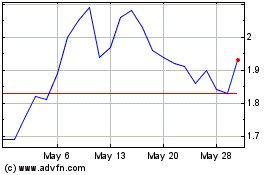A.M. Best Revises Outlook to Stable for Protective Life Corporation and Its Subsidiaries
December 21 2010 - 2:47PM
Business Wire
A.M. Best Co. has revised the outlook to stable from
negative and affirmed the financial strength rating (FSR) of A+
(Superior) and issuer credit ratings (ICR) of “aa-” of the primary
life/health subsidiaries of Protective Life Corporation
(Protective) (Wilmington, DE) (NYSE: PL), led by Protective Life
Insurance Company (PLIC) (Brentwood, TN). Additionally, A.M.
Best has revised the outlook to stable from negative and affirmed
the ICR of “a-” of Protective, as well as the debt ratings of
Protective and PLIC. (See link below for a detailed listing of the
companies and ratings.)
The revised outlook reflects the significant improvement in
Protective’s risk-adjusted capitalization and net earnings during
2009 and into 2010 after experiencing a significant decline in
2008, concurrent with the financial market crisis. Historically,
Protective has relied on capital market securitizations to fund
excess statutory reserves. Due to global financial stresses, which
effectively shut down the securitization markets in 2008,
Protective was forced to internally fund the excess reserves that
suppressed its regulatory capital ratio and limited its growth. As
the credit markets have reopened, Protective has financed virtually
all of its term insurance reserves as of year-end 2010. Going
forward, Protective has designed alternative universal life
products.
The ratings reflect Protective’s diversified revenue and profit
sources, broad distribution capabilities and strong track record of
effectively integrating acquired insurance companies and blocks of
business. The ratings also acknowledge Protective’s seasoned block
of traditional life insurance as a stabilizing factor for its
earnings.
Protective reported GAAP net income of $181.6 million for the
period ending September 30, 2010, after reporting net income of
$271.5 million for 2009. Although Protective reported a GAAP net
loss of approximately $42 million for 2008, A.M. Best notes that
Protective’s business mix of primarily traditional life insurance
provides for greater earnings stability than other companies with
large equity market exposures. The stable, recurring premiums
associated with Protective’s seasoned block of life business are a
source of strength, and the block contains significant embedded
profits. In addition, Protective’s acquisitions have increased its
earnings and have allowed the company to enter new markets and
realize certain operating efficiencies.
Protective recently announced that it has agreed to terms on two
acquisitions (purchase of United Investors and coinsurance of
Liberty Life), in which it will invest a total of more than $500
million of internal capital. The acquisitions will be immediately
accretive to earnings and provide $60-$80 million per year in
incremental pre-tax income. Initially, the internal capital
invested to acquire the businesses will lower Protective’s
risk-adjusted capitalization. However, A.M. Best projects that
Protective’s capitalization ratio post-closing will be supportive
of its ratings and that the new earnings stream will return
approximately 40% of the invested capital within two years.
Offsetting these positive rating factors is Protective’s level
of below investment grade holdings in its fixed income portfolio.
As a result of rating downgrades, below investment grade holdings
have increased from 5.4% as of year-end 2008 to 13.6% as of
September 30, 2010. In particular, 54% of Protective’s $3.4 billion
residential mortgaged-backed securities (RMBS) portfolio was rated
below investment grade as of September 30, 2010. However, A.M. Best
notes that over 99% of the RMBS portfolio is invested in super
senior or senior tranches that possess significant credit
enhancement within the deal structure. Also, the RMBS portfolio is
supported almost entirely by fixed-rate loan collateral, has a
relatively short average life (the weighted average life is less
than 2.5 years) and has limited or no exposure to subprime,
hybrids, option-arms and subordinated RMBS tranches. In addition,
Protective’s overall investment portfolio was in a $1.3 billion net
unrealized gain position as of September 30, 2010 (GAAP basis,
before tax and deferred acquisition costs), and credit impairment
losses (recognized in income) have fallen to $35 million for the
first nine months of 2010 from $312 million during 2008.
While Protective’s interest coverage ratio remains more than
adequate for its ratings, the ratio has decreased from its
historical range of 8 times to 10 times as a result of the current
level of financial leverage. Protective’s all-in financial
leverage—senior debt plus hybrids—is approximately 40% (excluding
other comprehensive income). However, Protective’s financial
leverage falls to 29% (excluding other comprehensive income) after
applying operating leverage treatment to the $800 million of senior
notes issued in October of 2009 for purposes of refinancing one of
its existing securitization transactions (see related press release
dated October 9, 2009).
For a complete listing of Protective Life Corporation and its
subsidiaries’ FSRs, ICRs and debt ratings, please visit
www.ambest.com/press/122115protective.pdf.
The principal methodology used in determining these ratings is
Best’s Credit Rating Methodology -- Global Life and Non-Life
Insurance Edition, which provides a
comprehensive explanation of A.M. Best’s rating process and
highlights the different rating criteria employed. Additional key
criteria utilized include: “Risk Management and the Rating Process
for Insurance Companies”; “Understanding BCAR for Life and Health
Insurers”; “Review of BCAR Treatment for XXX Captives”; “A.M.
Best’s Perspective on Operating Leverage”; “Rating Members of
Insurance Groups”; “A.M. Best’s Ratings & the Treatment of
Debt”; and “Rating Funding Agreement-Backed Securities.”
Methodologies can be found at
www.ambest.com/ratings/methodology.
Founded in 1899, A.M. Best Company is the world's oldest and
most authoritative insurance rating and information source. For
more information, visit www.ambest.com.
Copyright © 2010 by A.M. Best Company,
Inc. ALL RIGHTS RESERVED.
Planet Labs PBC (NYSE:PL)
Historical Stock Chart
From Apr 2024 to May 2024

Planet Labs PBC (NYSE:PL)
Historical Stock Chart
From May 2023 to May 2024
